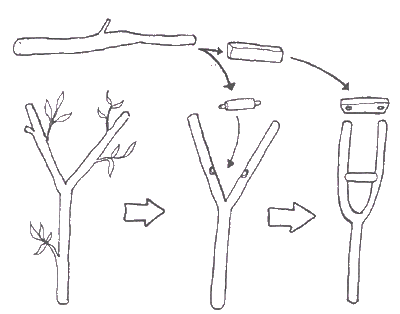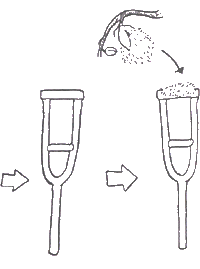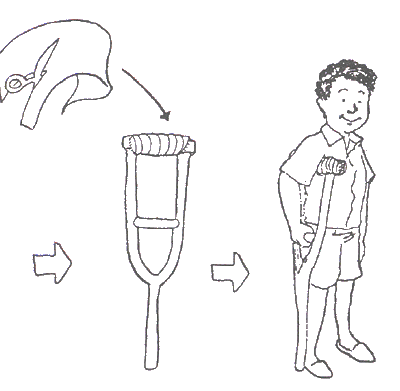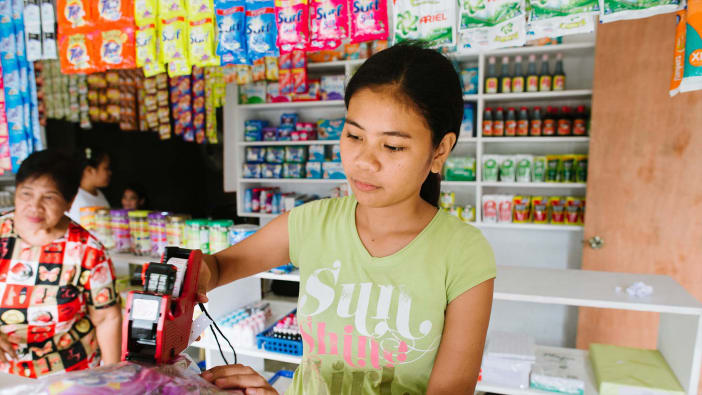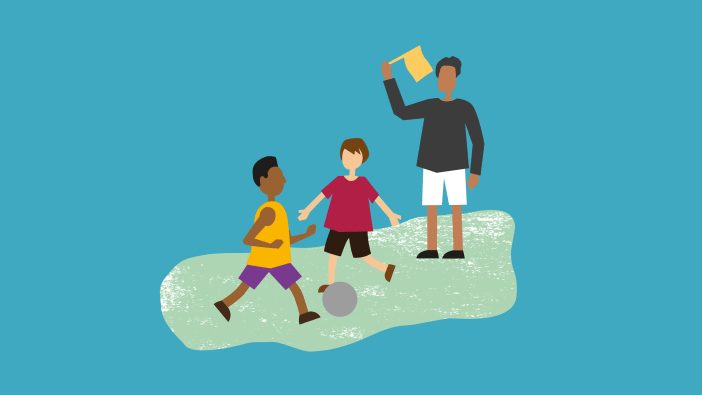These two pages have been compiled from Child-to-Child Activity Sheet No 6.5.
Child-to-Child Activity Sheets are a resource for teachers, and health and community workers. They are designed to help children understand how to improve health in other children, their families, and their communities. Topics chosen are important for community health and suit the age, interests and experience of children. The text, ideas and activities may be freely adapted to suit local conditions.
Further information from: Child-to-Child, University of London Institute of Education, 20 Bedford Way, London WC1H 0AL, UK.
Polio
The idea
Polio is caused by a virus which can leave a child weak and disabled. Arms and legs that are paralysed and backs that are twisted and weak can never be cured, but the healthy muscles can be taught to make up for the damaged ones. Children can help to build up muscles damaged by polio. They can spread the message that polio can be prevented by immunisation by trained health workers. Most importantly, they can help children with polio by being friendly, and playing with them.
What is Polio?
Polio is a disease which can injure the muscles of the body. In severe cases, children who have had polio may lose power in some of their muscles. One or more limbs – arms and legs – may be paralysed, and the spine or backbone may become twisted.
When children get polio, they may have a fever for some days. While they have fever, they need to rest very quietly. Sometimes the fever is very little, and it is almost impossible to know that the child is suffering from an attack of polio. Not all fever leads to polio. BUT if children have fever and then become weak in the arms, legs or back, they must be taken to the doctor or health worker.
Activities
Preventing Polio from Spreading
Everyone must be immunised
- Check to make sure that each child has been correctly immunised against polio, including the extra ‘booster’ doses. If children are not sure, they can ask their mothers to look on their health clinic card.
- Any child who has not been immunised should be encouraged to do so as soon as possible. What about brothers and sisters – have they been immunised? Have they had their extra booster dose?
- Find out from health workers when the immunisation can be done and encourage mothers and fathers to make sure all the children in the family have been immunised properly including the booster.
- Make a wall chart and make a mark against the name of each child who is immunised. Keep reminding those who have not been immunised, and work towards having a mark against everyone’s name.
Older children can help younger ones who may be frightened of having the immunisation. They can …
- go to the clinic with the younger ones, and comfort them if they feel frightened.
- play games with them while they wait at the clinic
- make sure that the younger children go back to the clinic for the booster doses when this is necessary. This is very important because the protection will be less if any doses are missed.
Helping the Disabled Child
Being Friends
Children can remember to include children who are disabled in their own play and work as much as possible. If a disabled brother or sister is small and cannot walk, the older children can find a way of carrying him or her with them, of taking him or her to school, and including him or her in their games.
If the disabled children are bigger, the older children can make a trolley, or perhaps the local carpenter can make a wheelchair with bicycle wheels. The older children can help to more the chair or trolley around.
Older children can also make a simple crutch or cut a stick to help the disabled child to walk. They can hang a rope over the bed, so that he can pull himself up, if he is not strong enough to sit up by himself.
Follow-up
After one or two months, quiz the children to see if they can remember the important points about polio: what are the symptoms? Why is it dangerous? How can we prevent it? How can we help those who have been disabled by it?
During the year, keep checking to make sure that every child in the class or group has been immunised against polio and has had the booster doses. Does the wall chart have every child’s name on it?
Have the children been able to identify and help a child who has been disabled by polio? If so, what have they done to help? Have they helped with exercise? With equipment? By being friends? What problems have they overcome? Have they been able to help the child over a long period of time, so that their help has made some difference to the child as well as the child’s family?
Using this sheet
Teachers can explain how immunisation protects the body, as part of the health or science lesson. Health workers can advise parents and show how to make simple aids. Children can make health cards and remind others of immunisation dates, especially the booster dose. They can help polio victims to do exercises, and make equipment for them to use. Sheet No 5.1,
Handicapped Children, suggests many other ways in which children can help a child who is handicapped.
How to make a crutch




